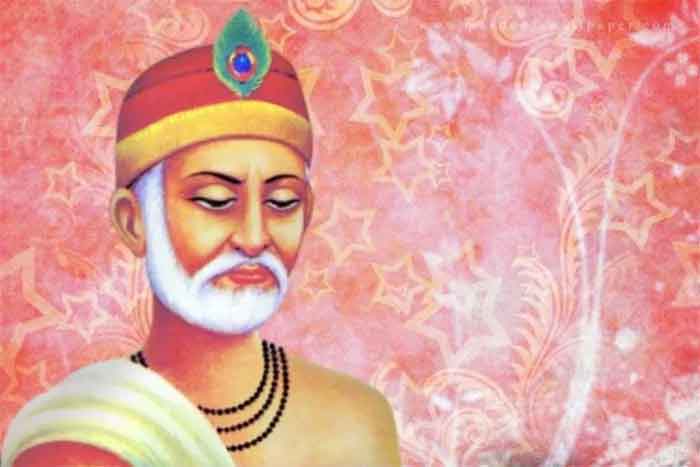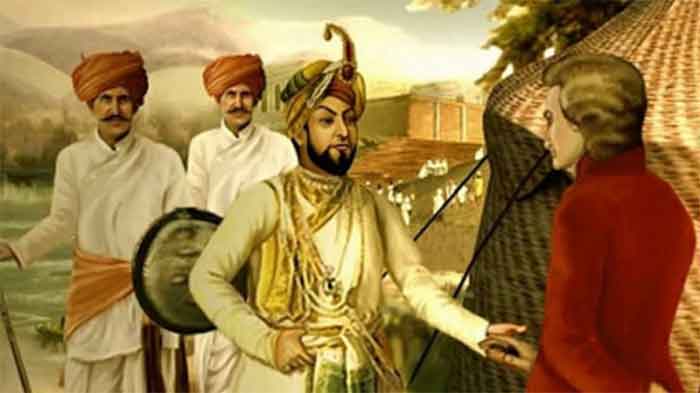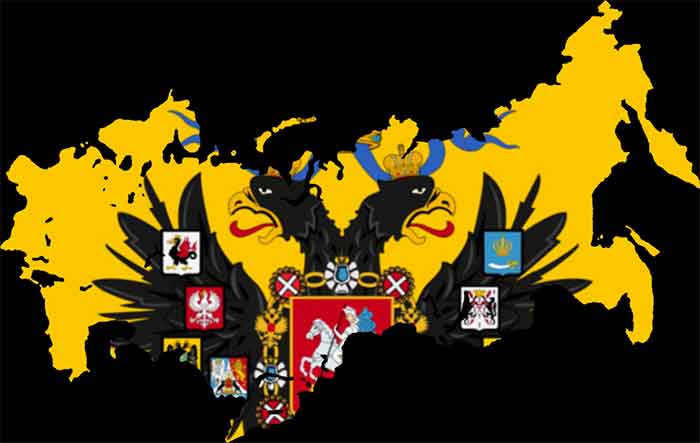The practice of temple demolition/ appropriation of images of gods and goddess was in vogue in ancient India and Kashmir much before the arrival of the Muslims. In ancient times the achievements of Hindu Kings were measured not only by the number of temples they built in their realms during peace times but also of those they appropriated/demolished in the territories of the vanquished as a mark of their victory in the war.

The gap between what is now being politicised and what has actually happened in the past is widening at an alarming pace with each passing day, making it extremely difficult for the people to differentiate between truth and falsehood, history and fiction. But an objective analysis and understanding of the dynamics of history within its own time frame and milieu will enable us to sift fact out of fiction. It will unburden us of the terrible dilemma caused by the false narrative peddled by commissioned writers, fake historians and vested interests.
There is no denying that temples were desecrated and plundered by the Muslim rulers in India at some junctures of history for political reasons. But it is equally true that they were not the trend setters of this practice which was already in vogue in ancient India much before their arrival. Holding an inseparable place at the core of India’s ancient Statecraft and polity, it made obligatory for a conqueror to appropriate icons and destroy temples of the vanquished in order to register his victory. It also helped him recover the expenses incurred on his war with the enemy and considerably added to his financial strength.
The Sovereignty, royal privileges, political legitimacy and authority of both the loser and the winner in the war depended largely on the network of temples they patronized in their respective dominions during peace times. The promotion and upkeep of these religious edifices, and the patronage of their managers (Purohits/Brahamans) through land grants and other concessions determined the degree/extent of generosity, social acceptability and respectability of the given monarchy within its realms. The ruler’s achievements were, thus, measured not only by the number of temples, maths, stupas and monasteries they built in their dominions but also of those they looted and destroyed in the enemy territories to proclaim their victory.
In ancient times the politics and religion formed the main wings of dharma, presenting, thereby, a unique blend of an integrated whole. They were so interdependent and supportive of each other that it was almost impossible to discern any line of differentiation between the two. Their essential unity and unbreakable relationship was a common knowledge of all sections of society. Any conflict between the two and deviation from the established norm on the part of either the monarchy or the temple establishment was unacceptable to all and sundry.
After driving its authority from its Patron Diety, the Monarchy would set out on the path of its onward march towards its own flowering. For touching the acme of progress, it was vitally needed for it to bow its head before the Patron Deity, presiding over the main temple of the kingdom, and promote its tutelary and subsidiary deities in other parts of the kingdom with the belief that they would guard and protect the land, animals, agricultural products and the people residing there in the villages, towns and cities against calamities.
Tearing down these exalted symbols of sovereignty of the vanquished signified, thus, the conclusion/culmination of the long and complex process of conquest accomplished by the conqeurer with a lot of effort and sacrifice both of men and material. It implied the triumph of the victor over the loser King.
During the ongoing war the temples were otherwise targeted by the enemy forces which wasn’t at all atypical. The Maratha attack on the Tirupati temple in 1759, latest in history, furnishes a wonderful example of violent iconoclasm that resulted in considerable destruction and loot of temple wealth, murder of Brahmans, destruction of religious images and desecration of the Presiding Diety, goddess Sharada during the ensuing war. However, according to Kalkuni Vittal Hegde, known researchers on the subject, “If Tipu Sultan was not there to the rescue of the Peeta, it would not have existed now”.
Instead of destroying the image of Ganesha, the Pallava ruler of South India (Narasimhavarman 1) brought it intact to his Kingdom, Tamil Nadu and installed it there in 642 CE as a monument of the defeat of his adversary, the Chalukyas of Western Deccan.
Likewise, in 950 CE, Yashovarman, the Chandella ruler wrested the gold image of Vishnu Vaikunth from the Sahi Kings of Orissa after they were defeated by the Pratihara ruler, Herambapala. Yashovarman then overwhelmed Herambapala’s son, Devapala by bringing it to Khajuraho.
Apart from appropriating the icons of gods and goddesses through conquests, the powerful monarchs were used to grab the temple riches by resorting to other tactics. They would rather browbeat the weaklings into gifting them temple images and wealth without engaging them in war. It was a concession through which the weak Kings accepted the suzernity of the powerful and voluntarily gifted them temple wealth to avoid the fighting and the resultant devastation of sources of production.
Also whenever the Monarchy became suspicious of the activities of the management of worship places of both Hindus and Muslims , it did not hesitate to attack and demolish these all at once. By doing so it achieved multiple objectives. Not only it curbed the rebellious ambitions of the clergy and constricted their channels of communication with the worshippers and closed the premises of these places for congregational prayers, but it also acquired huge wealth and colossal readymade buildings which they put to various uses.
The non-Muslim rulers, however, preferred to render the seized mosques defunct by choosing to change them into granaries and arms storages. This is exactly what happened to the Badshahi Masjid, Lahore which according to Kanahiya Lal’s Tarikh-e-Lahore was converted into an Arsenal Depot and Horse Stable by Maharaja Ranjit Singh. Its precious jewels, marbles and chandeliers were retained by the British for themselves after they defeated the Sikhs. The Maharaja also ensured the closure of the magnificent Jamia Masjid, Srinagar after he conquered Kashmir, making it beyond the reach of local Muslims. Its siege continued during Dogra regime which also converted Pather Masjid, Srinagar into storehouse. No call for prayers is given from the Jamia Masjid presently for it continues to be closed by the government.
Like India, Kashmir’s ancient Kings desecrated and looted temples with manifold aims. Overcoming their financial crisis; foiling the intrigues of the league of Purohitas and Brahamans; breaking the hegemony of Kotta Rajas (fudatories of two divisions of Kashmir: Kamraz and Maraz) and other louche elements, upholding their sectarian cults and fulfilling their varied aspirations were prominent among their cherished designs. Kalhana’s Rajatarangini has ample evidence to this effect, making us believe that the Kashmiri Hindu Kings and Queens were too iconoclastic to annihilate and desecrate temples with impunity. In Rajatarangini we also come across Kings who attacked the temples whose managers had turned into a bunch of notorious gangsters, chasing after corruption, indulging in anti-monarchy activities, hatching conspiracies and resorting to fasts to pressure them into conceding their demands; the actions which were always beyond the Kashmir monarchy’s endurance.
While furnishing a huge list of idol-breakers, Rajtarangini places King Samkaravarman, King Kalasa and his son King Harsa at the top of those who followed the policy of iconoclasm by the “superabundance of their sins”. They defiled the statues of gods and goddesses by “pouring over their faces excrements and urine”.
( see Rajatarangini, tr. Aurel Steine, b.vii, verses: 1090-1092 and 869-873).
The Muslims rulers too followed the practice of temple demolition as enthusiastically as did their counterparts in ancient times. They did so not to crush Hinduism (as publicised by medieval propagandists and Persian chroniclers) but to establish their suzernity, and augment their wealth possessed in abundance by the temples. Unfortunately enough the contemporary Chroniclers have interpreted such events subjectively according to their own whims and prejudices. Being Qaseeda (ode) writers and in majority cases Courtiers also, they have eloguized the Muslim rulers as “Butshiken” with the aim of pleasing them and earning religious merit and goodwill of the clergy, ignoring, thereby, the real historical purport of the antiquarian practice.
These Chroniclers have even suppressed the truth about the temples which were constructed and assigned lands by the Sultans in Kashmir and elsewhere in India. The fact that the Mughal ruler Aurangzeb gave land grants and donations to temples of Vrindavan, Ujjain and Guwahati, and also demolished a mosque in Golconda to grab the wealth the local chief had concealed there
is not at all highlighted.
Similarly, Emperor’s attempt at altering the circumference of the chief Diety of one of the temples in Banaras to restore its sanctity that was violated by the head Priest by raping, beneath its huge pedestal, a Hindu Rani is portrayed not as a noble move of the Mughal royal benevolence but an act of bigotry simply to coverup the immoral episode ( see Dr. Ahad, Kashmir: Triumphs & Tragedies, pp. 91-92).
In 1687, the Emperor gave a piece of land near the Kashi Ghat to Ramjivan Gosain to build residential dwellings for Brahmans which fact was highlighted by historian Pardeep Kasherwani. He writes that the ‘Dharam Dand (religious pillar) of one of the temples still bears an inscription of the maintenance grant sanctioned by the Emperor in its favour’. In 1659, Aurangzeb issued a firman which reflects his firm faith in the goodwill of Brahmans in these words:
It is enjoined upon every functionary of the empire that they “must see that nobody unlawfully disturbs the Brahmins or other Hindus of that region, so that they might remain in their traditional place and pray for the continuance of the Empire.”
While totally ignoring the building of temples, particularly at Ganpatyar, Srinagar, by Sultan Sikandar of Kashmir (the sculptural Slab of which is still extant with this Sanskrit inscription: “Sri Sikandara Saha Reoye Sangpati Rahulya Kastvehkena Tatha…”), these chroniclers falsely accuse him of breaking the idols. The author of Baharistan-e-Shahi, the contemporary Persian source emphasizes that ‘the Sultan Sikandar fully eradicated infidelity in Kashmir and, therefore, God rewarded him with victories and prosperity.’
But quite contrary to this, the magnificence of Kashmir temples, built, protected and maintained by the Kashmir Sultanate impressed Mirza Haider so increasingly that in his Tarikh-e-Rashidi he eulogized them as ‘ wonders of Kashmir not to be seen elsewhere in the world ‘.
Dr. Abdul Ahad is an author and historian
















































